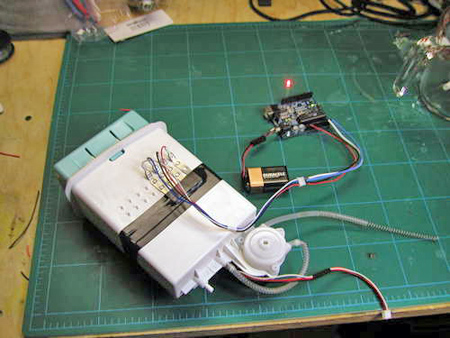
Tinker.it has published plans for building a software synthesizer using an Arduino. The Auduino uses granular synthesis to create a truly unique sound. The grain is constructed from two triangle waves. Each one has adjustable frequency, decay rate, and the repetition rate can be changed too. The Arduino just needs five potentiometers attached to the analog inputs and an audio jack on the digital out. You don’t have to use pots; you can use anything that varies the analog input between 0 and 5 volts. A video of the device is embedded after the jump. Continue reading “Auduino Software Synth”















